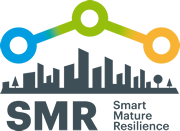Policies
Effort indicators
Resources dedicated to the development of the resilience action plan.
Results
Number of stakeholder groups involved in resilience-building activies about resilience.
Description
The city is aware of climate change and its remaining challenges and therefore, it is committed to adopting preventive actions to tackle the consequences of climate change. The actions cover topics such as: mobility, emission reduction, recycling, energy efficiency, adaptation among others.
Case study
Glasgow: Establishing a group of key city stakeholders to discuss resilience
Summary
When a resilience team was set up in Glasgow they sought to identify and engage key city stakeholders in discussion about resilience. This enabled city stakeholders to considered what resilience meant for them and to agree upon a cooperative solution.
Further information
 Relevant City Context
Relevant City Context
Cities who may find this case study useful are those with stakeholders who have formalised structures and a number of visions and strategies for the city with respect to a variety of sectors, for example, environment, economy, infrastructure, emergency response, utility delivery Cities are therefore likely to be around the ‘Moderate’ stage to be able to incorporate this case study.
Goal: To create a city wide resilience strategy agreed by all key city stakeholders.
It was important that all city stakeholders incorporated resilience into their own visions, polices and strategies and considered what it meant for them. Creation of the group enabled key city stakeholders to discuss their own internal priorities and visions for their own organisations and to agree upon a cooperative solution. The group ensured that individual organisations own strategies reflected the agreed city wide strategy and that each stakeholder focussed on resilience in their day to day consultation with citizens.
The group encouraged stakeholders to embed resilience in their annual monitoring and scheduling procedures. There was clear buy in from all city stakeholders which was reflected by taking the resilience strategy through internal approval mechanisms thus generating long term commitment.
Cooperation amongst stakeholders
When the resilience team was created for the city, a stakeholder mapping process was undertaken in a systematic way by considering the biggest issues across the city and ensuring it captured all relevant stakeholders. This included covering private, public and third sector organisations and ensuring that citizens were represented throughout the process. Time was spent encouraging stakeholders to join the group by explaining the importance of the buy-in and the value of the resilience process. This was believed to result in a balanced group representing the key challenges across the city.
Outcome
The process was believed to be extremely effective. A particular effective consequence was the value of the conversation. The process brought stakeholders together around a table which resulted in numerous spin-off conversations, collaborations and projects. Stakeholder consultation feedback reported that a reasonable number of people understood what resilience meant.
Resources
2-3 people (CRO & resilience team) full time for 6 month to establish the group and get buy-in. Resource was needed beyond this to ensure momentum but to a lesser degree. Once the structures have been set up and buy in to the group achieved less resources are needed.
Subscribe to our newsletter

This project has received funding from the European Union’s Horizon 2020 research and innovation programme under grant agreement no. 653569.
